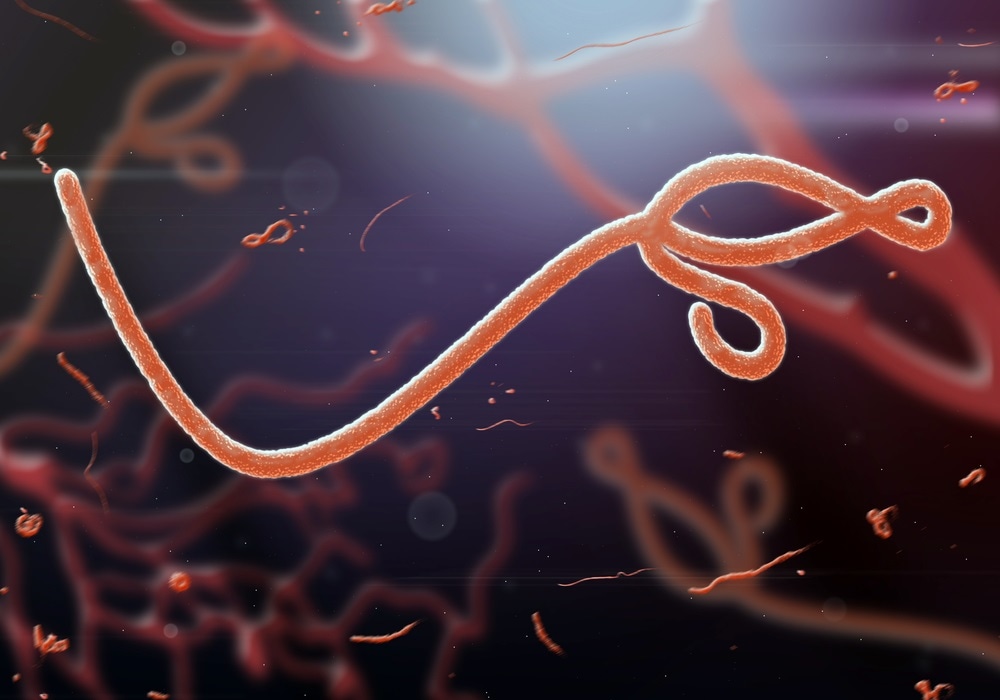The World Health Organization (WHO) and the government of the Democratic Republic of Congo are taking a fresh look at guidelines for the safe care of Ebola patients. The change has come after a patient died due to a second infection from Ebola. So far it has been thought that Ebola conferred permanent immunity on its survivors.
 Image Credit: jaddingt / Shutterstock.com
Image Credit: jaddingt / Shutterstock.com
In the Congo, Ebola fever has killed over 2000 of 3000 victims overall, since the outbreak began in August 2018. It is the second biggest epidemic since a much larger one in West Africa, that killed over 11 000 people between 2013 and 2016.
However, Ebola survivors (“the winners” or “les vainqueurs”) have been crucially important in caring for the stricken, especially children. They were thought to be immune, which meant they wore lighter protective gear, and had more extended contact periods with the patients, providing an opportunity for the human touch which is so vital for a sick person.
In contrast, medical personnel have to observe maximum security precautions, and spend minimum time in contact, to prevent transmission.
Alarm bells
The woman who died was a survivor, taking care of Ebola patients in an ALIMA (The Alliance for International Medical Action) treatment center in Beni, a red zone area, which means it is at the highest risk of infection transmission.
She, along with dozens of other Ebola survivors, was assumed to be protected against the Ebola virus. However, when she fell sick, her test results showed an Ebola infection. She died in July before she could even be admitted for care.
The case has raised several questions and is a “big red flag event” for all clinical staff involved in Ebola management.
For instance, researchers are questioning whether the first test was a false positive, making the second episode the first true exposure she had. Alternatively, perhaps it could have been a relapse following incompletely cured Ebola infection. There is not currently an answer.
Danger and difficulty in Ebola management
Ebola care is already difficult because of internecine conflict in the war-torn region, where medical center staff and community workers all face danger from both guerillas and the virus. Several have been killed during clashes and targeted attacks.
Furthermore, containment is problematic as patients at high risk of infection still occasionally slip the quarantine net, posing a danger of spreading the infection to other places.
Research on Ebola immunity is lagging behind the knowledge of its management and prevention. Yet, the case has spurred authorities to draft new guidelines warning against exposing survivors to possible reinfection, for fear of incomplete immune protection. Several cases of relapse are known, of course.
For instance, a foreign nurse fell sick ten months after she recovered from the infection. However, in previously known relapses, symptoms are more localized and non-fatal, says the head of the Biosecurity Program at the University of New South Wales’ Kirby Institute, Raina MacIntyre.
No reinfection has ever been confirmed since its first discovery, in 1976. Furthermore, one study showed that 14 survivors of the first Ebola outbreak still exhibited an immune reaction to at least one Ebola virus protein after 40 years. For the most part, there has been an assumption of immunity.
All this could change now. Ebola survivors will have to exercise more caution when working in treatment centers, maybe following standard precautions if they do.
Some possible high-risk criteria for Ebola survivors being reinfected might be the initial infection being mild with a low viral load in the blood. This might indicate that their immune system could not generate complete immunity, leaving them at risk for a second infection.
In addition, pregnant women, whose immune system is downregulated, and people with HIV or tuberculosis infections may also be barred from caring for Ebola victims. The woman who died was pregnant at the time, though she did not reveal this fact to the staff at the center.
Doubt and hope
The Congolese health research team is still studying the case to try and develop a better understanding of what occurred. Moreover, the authorities have taken a close look at the clinical details of all the vainqueurs working with sick Ebola patients, and treatment centers have been nudged to make sure that biosafety rules are being followed by all employees.
Meanwhile, Johnson and Johnson has made a second experimental vaccine available and it will probably come into use next week. Though its use is said to be part of a clinical trial, up to 500 000 people could be protected for free with the donated vaccine.
The emergence of effective new drugs is a beacon of hope and a salute to the dedication of doctors, researchers, and other staff engaged in fighting the disease in the midst of war.